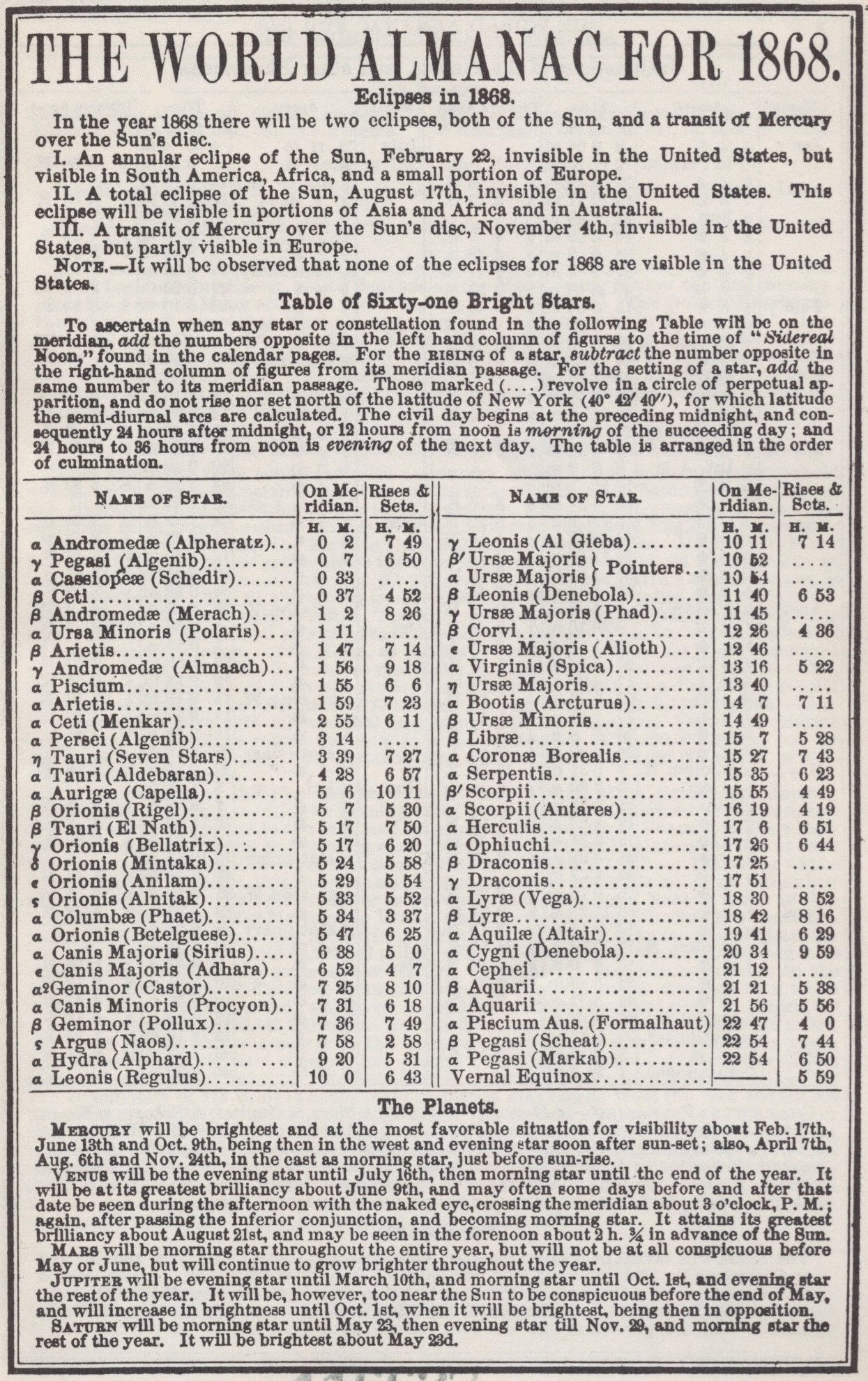This is a reprint of a “From the Local History Room” column that first appeared in November 2014, before the launch of this weblog.
The World Almanac of 1868
By Jared Olar
Local History Specialist
While most of the Pekin Public Library’s Local History Room collection pertains strictly to Pekin and Tazewell County, the collection also includes many items of a wider historical interest. One of them is a facsimile reprint of the very first edition of The World Almanac.
In the years after its appearance, The World Almanac would become a standard, handy reference work annually chronicling the events and statistics of the world. However, that is not why it is called “The World” Almanac. In fact, it wasn’t envisaged as a comprehensive almanac of the world, but originated as the almanac published by a newspaper called “The New York World.” That newspaper went out of business in 1966, but the almanac survived.
The first World Almanac came out in 1868, only three years after the end of the Civil War and the assassination of President Abraham Lincoln. The first edition was only 120 pages in length. The 2014 edition has 1,008 pages. Since 1868, The World Almanac has been published annually apart from a 10-year hiatus from 1876 to 1886.

As an almanac, naturally the 1868 World Almanac begins with a few pages about astronomy and “the weather,” that is, the appearance, movements and locations of the sun, moon, planets and stars, opening with a list of solar eclipses and planetary transits of the sun. The almanac makes no reference to the planets Uranus, Neptune and Pluto. In 1868, the existence of the dwarf planet Pluto was not yet known (it would not be discovered until 1930), but Uranus and Neptune had been discovered in 1781 and 1846, respectively. However, because they were not visible to the naked eye, their appearance and motion did not qualify as “weather” as the compilers of The World Almanac understood it.
The 1868 World Almanac also includes agricultural, economic and financial data, lists of the names of government officials, members of Congress, and foreign ambassadors, and election returns from each state of the union. The almanac gives a somewhat extended treatment to documents of the U.S. federal government that had to do with the process of post-Civil War “Reconstruction” and constitutional amendments, as well as the impeachment of President Andrew Johnson.
The almanac’s chronicle of “Important Events in 1867” mentions that Illinois ratified the 14th Amendment to the U.S. Constitution on Jan. 15 of that year. The governor of Illinois in 1867 was Richard J. Oglesby, and the state’s debt amounted to $6,832,00 in civil debt and $790,000 in war debt.
In the section on the state election returns for Illinois, the almanac comments, “There was no general election in Illinois in 1867; the results of the county elections, however, showed democratic gains, though neither party polled its full vote.” The table of election returns includes two columns showing the county-by-county results in the presidential election of 1864, when, according to the 1868 World Almanac, Illinois cast a total of 189,949 votes for Abraham Lincoln and 158,730 votes for his Democratic opponent, Gen. George B. McClellan. (Other reference works say the vote tallies were 189,512 for Lincoln and 158,724 for McClellan.)










